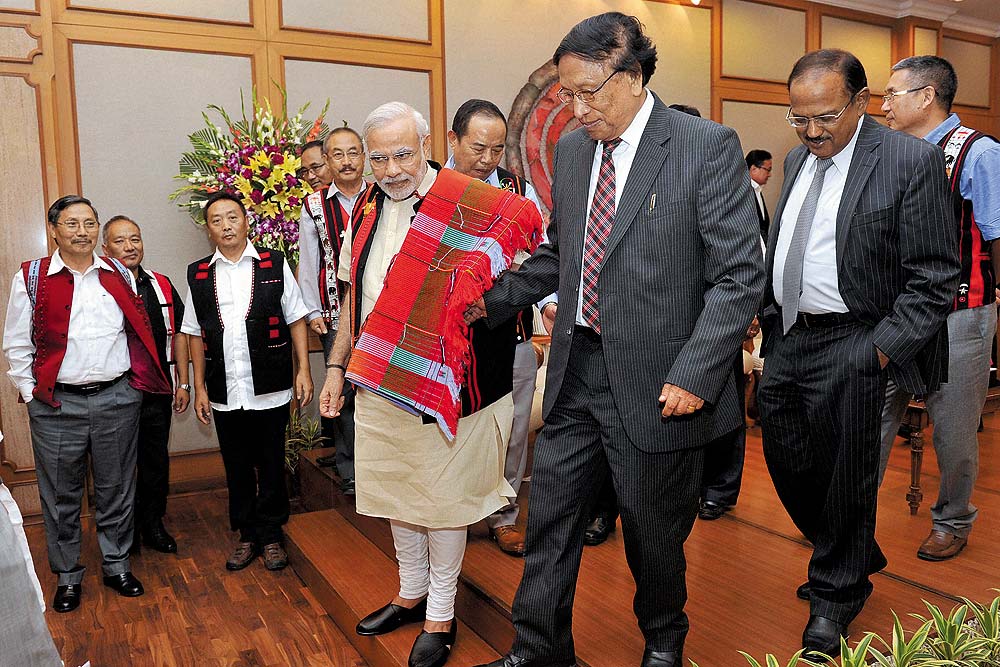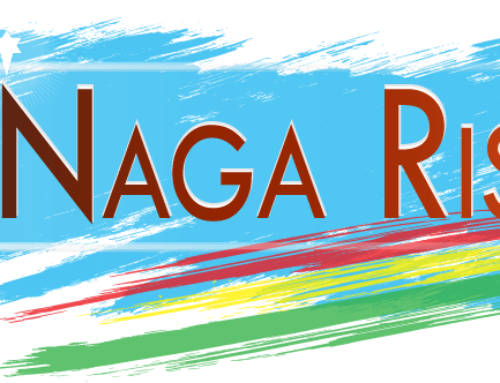By Bharat Bhushan | Source: Business-Standard
Much is being made in the media of the National Socialist Council of Nagaland (Isak-Muivah) “hardening its stance” on a separate flag, a separate Constitution and the integration of all contiguous Naga-inhabited areas of India’s northeast. They have always been integral to the negotiating position of the NSCN (IM). It is the final agreement which will hopefully resolve these issues amicably.
It is also wrong to make alarmist comparisons with J&K. The Naga militancy’s trajectory is from separatism to integration rather than the reverse as in Kashmir. The Nagas want a strong federal relationship with India and not to break away from it. No foreign power is involved in the Naga issue. The only issue is how the Framework Agreement of August 3, 2015 between the Indian government and the NSCN (IM), can be steered through the last mile.
Since August 14, 1947, when some of their leaders declared independence from British colonial rule, Nagas have celebrated their ‘Independence Day’ one day earlier than India. Every year many Nagas, the insurgent groups but increasingly also others, hoist their sky-blue flag with a rainbow and the Star of Bethlehem. Scare-mongering about Nagas hoisting their flag is a red-herring. The hurdles in the peace process lie elsewhere.
The Indo-Naga peace talks have entered a difficult phase since R N Ravi, the Chief Indian interlocutor for the talks, was also appointed Governor of Nagaland. As Governor, he has responsibility for overseeing the executive functioning of the state and implementation of laws. However, as the Prime Minister’s representative in the Naga peace talks he has to think out-of-the-box and negotiate existing laws more flexibly. The Governor’s is a law and order role, the Interlocutor’s a political one and it is difficult to juggle between them.
In retrospect, Delhi may have jumped the gun in appointing Ravi as Governor of Nagaland before the peace agreement was done and dusted. As Governor he has complained to the Chief Secretary of the state about levies by the armed insurgent groups which they call a legitimate ‘tax’ by their ‘government’. He has expressed concern about the collapse of law and order because of groups “who question the sovereignty and integrity of the nation”. The pressures from Raj Bhawan resulted in a quixotic order by the state’s Executive requiring civil servants to declare in writing if any of their kin were affiliated with insurgents. These are the same insurgents that Ravi is tasked to engage with wearing his peace-maker’s hat.
R N Ravi, Governor of NagalandR N Ravi, Governor of NagalandRavi’s difficulties as an Interlocutor have been compounded by bringing in smaller insurgent groups and surrendered groups (christened, Naga National Political Groups or NNPGs) into the peace process even before he had reached an agreement with the largest rebel group, the NSCN (IM). Ravi’s elevation of those on the fringes to the status of equal stakeholders with the most powerful rebel group has had adverse consequences.
The NNPGs began to think of themselves as running “parallel governments” and started collecting ‘taxes’ with a gusto. The rising levels of extortion follow from this mistake and not from a failure of law and order.
Like the camel trying to push the Arab out of the tent the NNPGs have also unilaterally declared their willingness to sign an agreement with Ravi before outstanding issues with the NSCN (IM) have been resolved. An agreement which keeps out the largest and strongest rebel group can never be a lasting settlement.
The demand for ‘Greater Nagalim’ is also spooking the press. Unification of all contiguous Naga-inhabited areas is not only a demand of the NSCN (IM) but of every Naga rebel group and even of the Nagaland Legislative Assembly. The government recognises it as a long-standing demand of the Nagas while also recognising that it cannot be conceptualised as territorial unification given the apprehensions of the states abutting Nagaland.
In the peace negotiations this difficulty is sought to be resolved by proposing a non-territorial solution for preserving Naga identity and culture by creating Naga Territorial Regional Councils within adjoining states with a sizeable Naga population. Their powers will be defined in the peace agreement. Any desire for integration that persists among the Naga even after this will have to find expression and resolution through democratic processes.
The proposals for a separate Naga flag and constitution may seem especially intractable now when precisely these symbols have been taken away from the erstwhile state of J&K. On October 31, 2019, when Naga peace talks were on the verge of breaking down – two months after the revocation of J&K’s special status — the Government of India (GoI) salvaged the process by the following formulation: “The Naga leaders raised the issue of flag and constitution for Nagaland as their national identity in this negotiation. The GoI is not in a position to recognise it. Both sides understand each other’s position. However, respecting the will of the Naga people and prevailing sentiments, the GoI and NSCN agreed that the two issues will be resolved amicably at the earliest possible through earnest peaceful political process.” That process unfortunately has not started in earnest.
The NSCN (IM) has suggested in the negotiations that the final agreement between the two sides could be adopted as the “Naga Constitution” which could be incorporated in the Indian Constitution replacing Article 371A. Nagas will call it their Constitution or Yehzabo while the rest of India can refer to it by its Article number in the Indian Constitution. Solutions are possible on the flag issue also, for example flying of the Tri-colour along with the Naga flag. The attempt to front-load the flag and Constitution issue with possible separatism is unwarranted in the context of such creative ongoing negotiations.
So far the Indian negotiators in the Naga peace talks, including R N Ravi despite his recent moves, have worked out a settlement that interprets India’s federalism in a creative way. Its imaginative depth in redistributing and sharing the competencies of the State, Union and Concurrent Lists in the Constitution is breath-taking. This process must not be derailed in the last mile.



